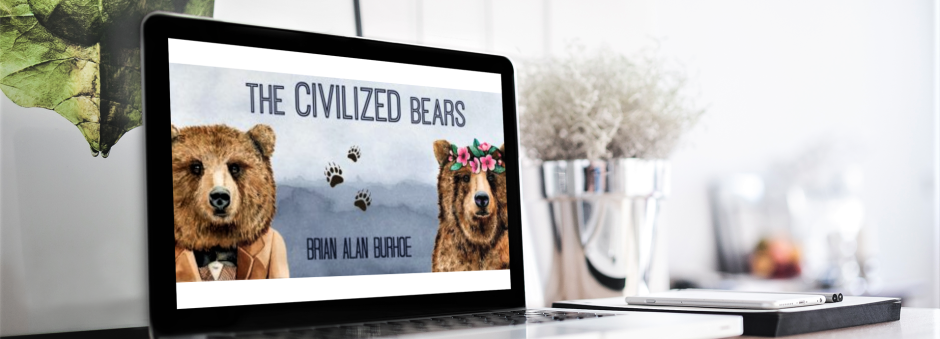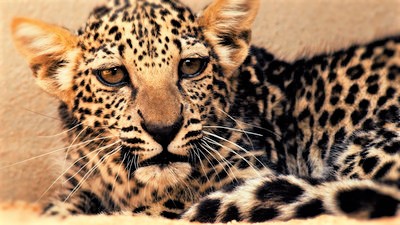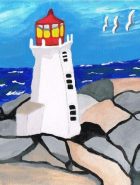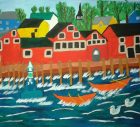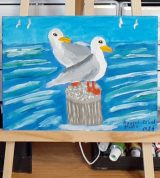Is the Arabian Leopard endangered?
Saving endangered species is certainly near the top of this family’s Emotional List.
We’ve seen tragedies and we’ve seen triumphs. From local species such as Polar Bears, Wolves, Bison, Eastern Cougars, Ferruginous Hawks, Burrowing Owls and Buff-breasted Sandpipers to international critically endangered species such as the African forest and Bornean Elephants, Black Rhinos, a number of gorilla species, Galápagos Penguins, Snow Leopards, lions, tigers — and one we haven’t heard about as much, the Arabian Leopard.
Among the latest news is word that the endangered Arabian Leopard is now the centre of an intense program to protect this rare and beautiful animal.
Saving the Arabian Leopard?
GOOD NEWS: “The now 6-month old Arabian Leopard baby cub is one of 16 precious Leopards in AlUla’s Arabian Leopard Breeding Program!”
In a recent press release, the Royal Commission for AlUla (RCU) announced the birth of an Arabian leopard cub, offering hope for the revival of her critically endangered species.
“The female cub was born on April 23,” explained the news release. “Her gender identification and first health check occurred on that day. The cub is now one of 16 born in a captive-breeding programme at the Arabian Leopard Breeding Center in Taif, Saudi Arabia as part of a campaign to bring the animal back from near extinction.”
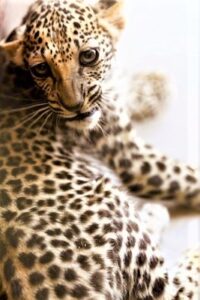 How many Arabian leopards are left in the world?
How many Arabian leopards are left in the world?
“Her species numbers are fewer than 200 in the wild after centuries of habitat loss and poaching.
“The International Union for Conservation of Nature (IUCN) says the species is Critically Endangered, meaning it’s considered to be facing an extremely high risk of extinction in the wild.
“The leopard’s habitat, which formerly spanned the Arabian Peninsula and reached into the Levant, is now restricted to three countries: Saudi Arabia, Oman and Yemen. The breeding centre is operated by RCU, the agency regenerating a 22,561km swath of north-west Saudi Arabia as a global destination for natural and cultural heritage.
“Motivation in Arabia to save the leopard is strong. For the region’s inhabitants the Arabian leopard – known in Arabic as An Nimr Al ‘Arabi’ – has long represented beauty, tranquility, physical strength, fearlessness and freedom. The animal has occupied a special place in the imagination for millennia and is found in ancient rock art, stories and even everyday expressions.
“For this reason the birth of the cub represents a gain for Saudi cultural heritage as well as natural heritage.”
As part of the long-range plan, “the species will eventually be reintroduced into the wilderness in the mountains of AlUla, by restoring the population through the breeding programme and the preparation of a suitable habitat in which the leopards can thrive.”
The Arabian Leopard campaign includes these Six Initiatives:
- Expansion of the captive-breeding programme with the opening of a state-of-the-art breeding centre to open by early 2024 as part of Sharaan Nature Reserve, AlUla.
- Establishment of the Arabian Leopard Fund, towards which RCU has allocated USD 25 million.
- Extension of partnerships with relevant conservation entities such as the International Union for Conservation of Nature (IUCN) and Panthera.
- Conversion of 80% of the AlUla project’s land into nature reserves, in line with the Saudi Green Initiative. The Sharaan Nature Reserve, for example, will restore and conserve the ecosystem, including indigenous flora and fauna, across 1560 square kilometres.
- Reintroduction of prey species such as Nubian Ibex and Idmi Gazelles.
- Training of AlUla residents as park rangers to safeguard the reserves.
Dr Ahmed Almalki, Nature Reserves Director, concluded: “This birth is significant because it is one step further toward reviving the Arabian leopard. We believe that saving endangered species such as the Arabian Leopard is critical to the protection of our planet and the natural balance of our ecosystem. Our goal at RCU is nothing less than to restore the power of nature’s balance.”
To learn more, visit https://www.rcu.gov.sa/en/meetourcub/.
Do you like this Wildlife Post?
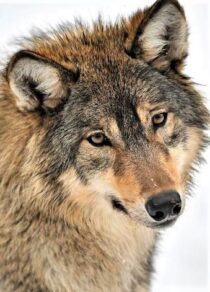 IF SO, YOU MIGHT WANT TO READ WOLFBLOOD — MY MOST POPULAR ANIMAL STORY:
IF SO, YOU MIGHT WANT TO READ WOLFBLOOD — MY MOST POPULAR ANIMAL STORY:
“I JUST READ WOLFBLOOD AGAIN FOR GOOD MEASURE. ONE FOR ANY WOLF LOVER. ENJOYED IT BUT WISH IT WAS A FULL LENGTH NOVEL.” – Gina Chronowicz @ginachron
“GREAT SHORT STORY! DOES REMIND ME OF CALL OF THE WILD, WHITE FANG…” – Evelyn @evelyn_m_k
A “stirring, heart-warming and sympathetic” yarn in the Jack London Tradition of a solitary Grey Wolf and it’s yearning for a place in the far-flung forests of the Northcountry. FREE TO READ ==> WOLFBLOOD: A Wild Wolf, A Half-Wild Husky & A Wily Old Trapper
About AlUla:
“Located 1,100km from Riyadh in north-west Saudi Arabia, AlUla is a place of extraordinary natural and human heritage. The vast area, covering 22,561km², includes a lush oasis valley, towering sandstone mountains and ancient cultural heritage sites dating back thousands of years.
“The most well-known and recognised site in AlUla is Hegra, Saudi Arabia’s first UNESCO World Heritage Site. A 52-hectare ancient city, Hegra was the principal southern city of the Nabataean Kingdom and is comprised of nearly 100 well-preserved tombs with elaborate facades cut into sandstone outcrops. Current research suggests Hegra was the most southern outpost of the Romans after conquering the Nabataeans in 106 CE.
“In addition to Hegra, AlUla is home to a series of fascinating historical and archaeological sites such as: an Old Town surrounded by an ancient oasis; Dadan, the capital of the Dadan and Lihyan Kingdoms, which is considered one of the most developed 1st-millennium BCE cities of the Arabian Peninsula; thousands of ancient rock art sites and inscriptions in Jabal Ikmah; and Hijaz Railway stations.”
About the Royal Commission for AlUla:
“The Royal Commission for AlUla (RCU) was established by royal decree in July 2017 to preserve and develop AlUla, a region of outstanding natural and cultural significance in north-west Saudi Arabia. RCU’s long-term plan outlines a responsible, sustainable, and sensitive approach to urban and economic development, that preserves the area’s natural and historic heritage, while establishing AlUla as a desirable location to live, work, and visit. This encompasses a broad range of initiatives across archaeology, tourism, culture, education, and the arts, reflecting a commitment to meeting the economic diversification, local community empowerment, and heritage preservation priorities of the Kingdom of Saudi Arabia’s Vision 2030 programme.”
SOURCE: The Royal Commission for AlUla, PRNewswire & Civilized Bears
Saving the Arabian Leopard: Critically Endangered Leopard Cub Born
Amur leopards, An Nimr Al Arabi, Arabian Leopards, endangered species, how many Amur leopards are left in the world, how many Arabian leopards are left in the world, how many leopards are left in the world, International Union for Conservation of Nature, IUCN, Panthera, RCU, Royal Commission for AlUla, Saving the Arabian Leopard, snow leopards and wildlife.
